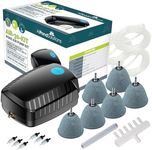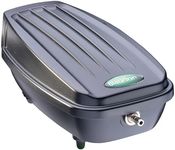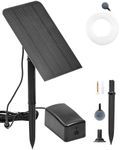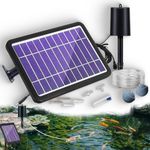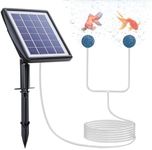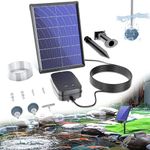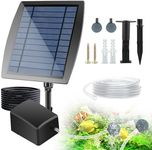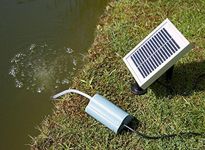Buying Guide for the Best Solar Pond Aerator
Choosing the right solar pond aerator involves understanding your pond's specific needs and the features of the aerator that will best meet those needs. A solar pond aerator is a device that uses solar energy to power an air pump, which helps to oxygenate the water in your pond. This is crucial for maintaining a healthy aquatic environment, as it supports fish and plant life by preventing stagnation and promoting beneficial bacteria. When selecting a solar pond aerator, consider the size of your pond, the amount of sunlight your location receives, and the specific requirements of your pond's ecosystem.Pond Size CompatibilityPond size compatibility refers to the aerator's ability to effectively oxygenate a pond of a certain size. This is important because an aerator that is too small for your pond will not provide adequate oxygenation, while one that is too large may be unnecessarily powerful and costly. Aerators are typically rated for ponds of specific sizes, often measured in gallons or surface area. For small ponds, a low-capacity aerator will suffice, while larger ponds will require a more powerful unit. To choose the right one, measure your pond's volume or surface area and select an aerator that matches or slightly exceeds this size.
Solar Panel WattageSolar panel wattage indicates the power output of the solar panel that comes with the aerator. This is crucial because it determines how efficiently the aerator can operate, especially during periods of low sunlight. Higher wattage panels can generate more power, which is beneficial for larger ponds or areas with less consistent sunlight. Panels typically range from low wattage (10-20 watts) for small ponds and sunny locations, to higher wattage (30 watts and above) for larger ponds or areas with less sunlight. Consider your local climate and pond size when choosing the appropriate wattage.
Air Pump CapacityAir pump capacity refers to the volume of air the pump can move, usually measured in liters per minute (LPM). This is important because it affects how well the aerator can oxygenate the pond. A higher capacity pump can move more air, which is beneficial for larger ponds or those with higher oxygen demands. For small ponds, a lower capacity pump (around 10-20 LPM) may be sufficient, while larger ponds may require a pump with a capacity of 30 LPM or more. Consider the size of your pond and the density of fish and plant life when selecting the air pump capacity.
Battery BackupBattery backup is a feature that allows the aerator to store solar energy for use during cloudy days or at night. This is important for maintaining consistent oxygenation in your pond, regardless of sunlight availability. Some aerators come with built-in batteries, while others may require separate purchase. If your area experiences frequent cloudy weather or you want to ensure continuous operation, a model with a battery backup is advisable. The capacity of the battery, measured in amp-hours (Ah), will determine how long the aerator can run without sunlight. Choose a battery capacity that aligns with your pond's needs and local weather patterns.
Durability and MaterialDurability and material refer to the construction quality of the aerator and its components. This is important because a durable aerator will withstand environmental conditions and last longer, providing better value over time. Look for aerators made from weather-resistant materials such as stainless steel or high-quality plastics. Consider the climate in your area; if you experience harsh weather conditions, opt for a model known for its robustness. Additionally, check for warranties or guarantees that can provide peace of mind regarding the product's longevity.

